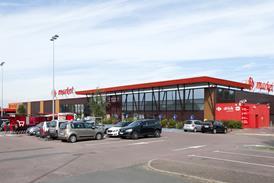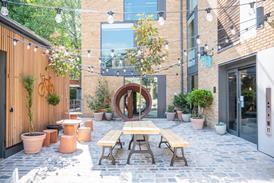Designing a building to achieve ‘best value’ has never been more complicated.

For one, the range of stakeholders that need considering might not have been born yet. At varying scales, the built environment must perform effectively and in practical perpetuity across its whole lifecycle for clients (present and future communities), for changing patterns in the way we live and work, for the wider public and for the planet.
Our fiduciary duty is in many ways distinct from the master masons and decorated architects of a bygone age. The practicalities of building might have been more challenging, yet the process was relatively simple when architect Christopher Wren designed St Paul’s Cathedral. There was less to consider. What we have to synthesise today combines a huge array of highly specialised talents, to ensure that the built fabric we weave together is adaptable enough to survive obsolescence, durable enough to lock in carbon and anticipatory to new trends, all of which are essential obligations that architects must now embrace.
But in others, the spirit of architecture hasn’t changed at all. Architecture is undoubtedly a different industry to what it was half a century ago, let alone centuries. But the beating heart of the profession is still to delight, to excite, to tell stories and to create spectacular buildings that frame great public space.
If anything, we’re designing buildings now in the anticipation that they will be around just as long as gothic monuments. They have to be. How long a building will last in the face of ever-changing demands is the crucible in which every new blueprint is now cast.
What does best value mean when we must factor in the 4D chess of everything above? I’d like to put forward a new conception of it.
Best value is, among other things, designing for long-term functionality. The simple fact that buildings must make a valid contribution to their end users and to their community is easily forgotten. We’re not in the business of building sculptures that are style over substance. A great image must be complemented by a deep awareness of how end users will interact with the spaces we create and the activity they house. The built environment is the enabler to education, hospitality, healthcare and housing and a driver of social, environmental and economic outcomes.
The bleeding edge of technology and its application to architecture opens up a world of new possibilities, but best value is not attained by digitisation. Architecture is still sensory. If we’re busy behind screens, then we risk allowing the tool to become dominant. They are a means to an end, not an end in themselves. Aside from potentially sapping the fun out of what is a very practical profession, technology is no substitute for intuition. Best value for the enormous array of stakeholders we’re now accountable to lies in people, not the digital product.
In the UK, we’re fortunate to have a great many examples of much-loved architecture rendered as far back as when Bath was one big thermal spa. As the city where I’ve lived for most of my adult life, its foundations are quite literally built on the beauty of local material. It’s comfortable. Public space is well proportioned and the terraces that frame it designed to meet the fundamental tenets of what we now call ‘wellbeing’.
Best value for clients, investors, communities – you name it – may require us to replicate what has worked before.
And to my final point, the complexities we need to navigate today in architecture and design call for honesty. There is no greater value. Debates may persist on retrofit, on conversion and on the way we achieve net zero, but when we make decisions, we must qualify ‘best’ and be transparent about where we appropriately use concrete and where there are substitutes and limitations.
Fiduciaries, we are more than ever. Our actions have consequences. But in the face of a very large and, at times, intimidating frontier, we have never had a greater opportunity to create best value of a kind that puts down permanent roots.
Jo Wright is UK managing director at Perkins&Will































No comments yet